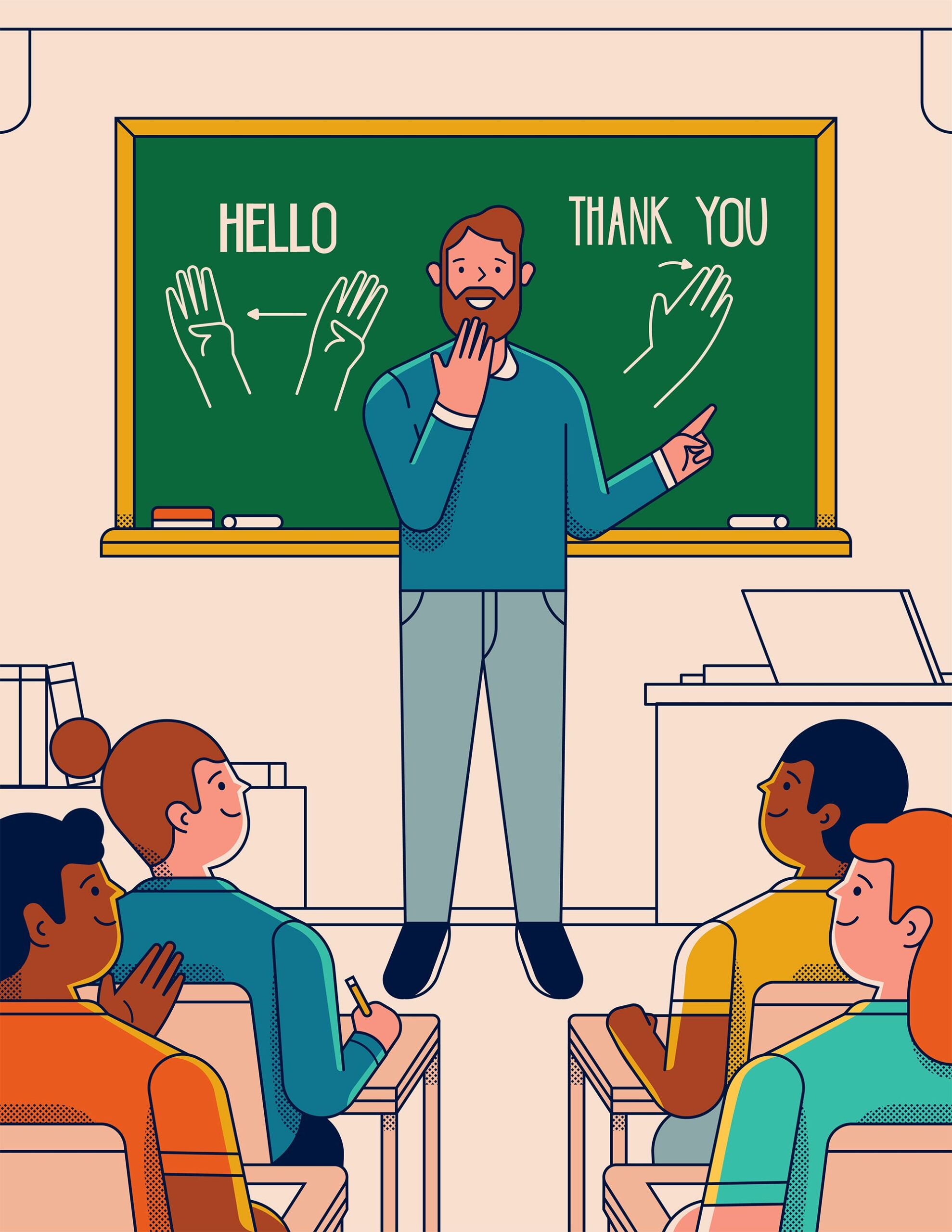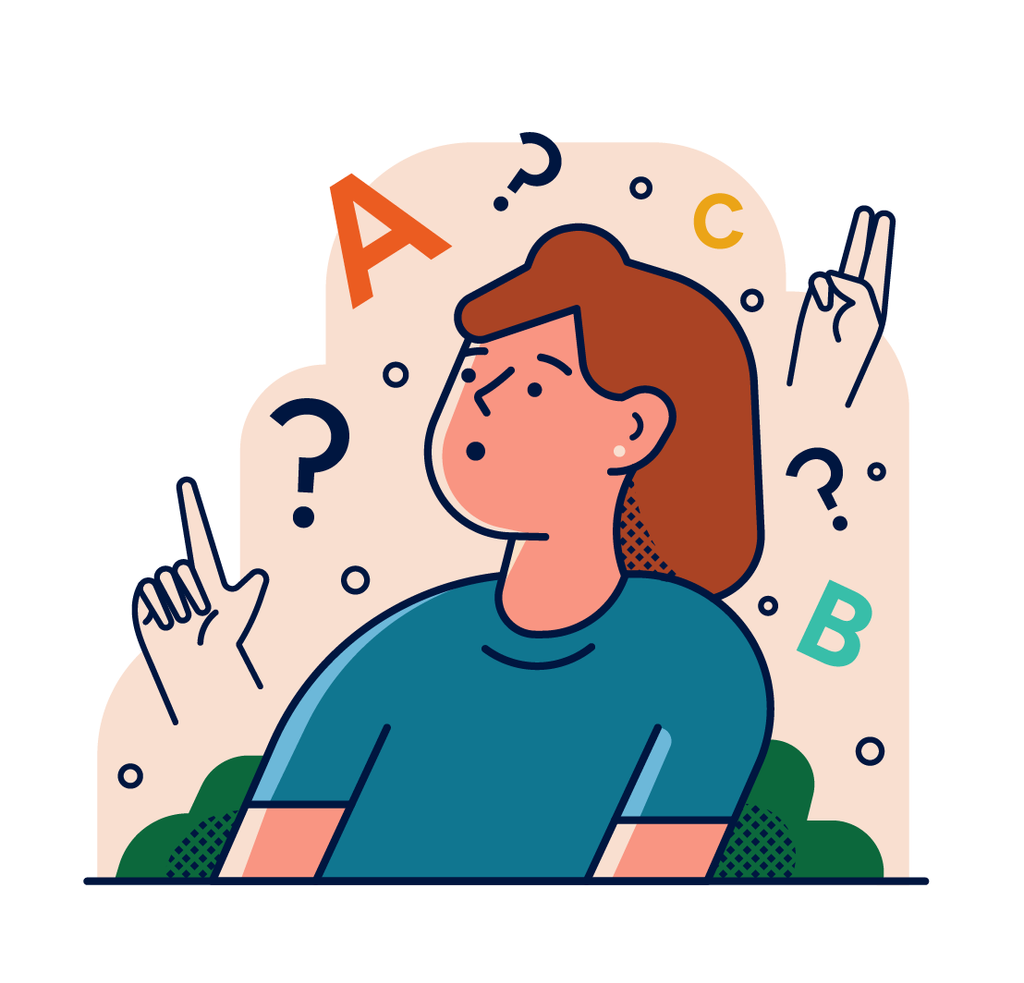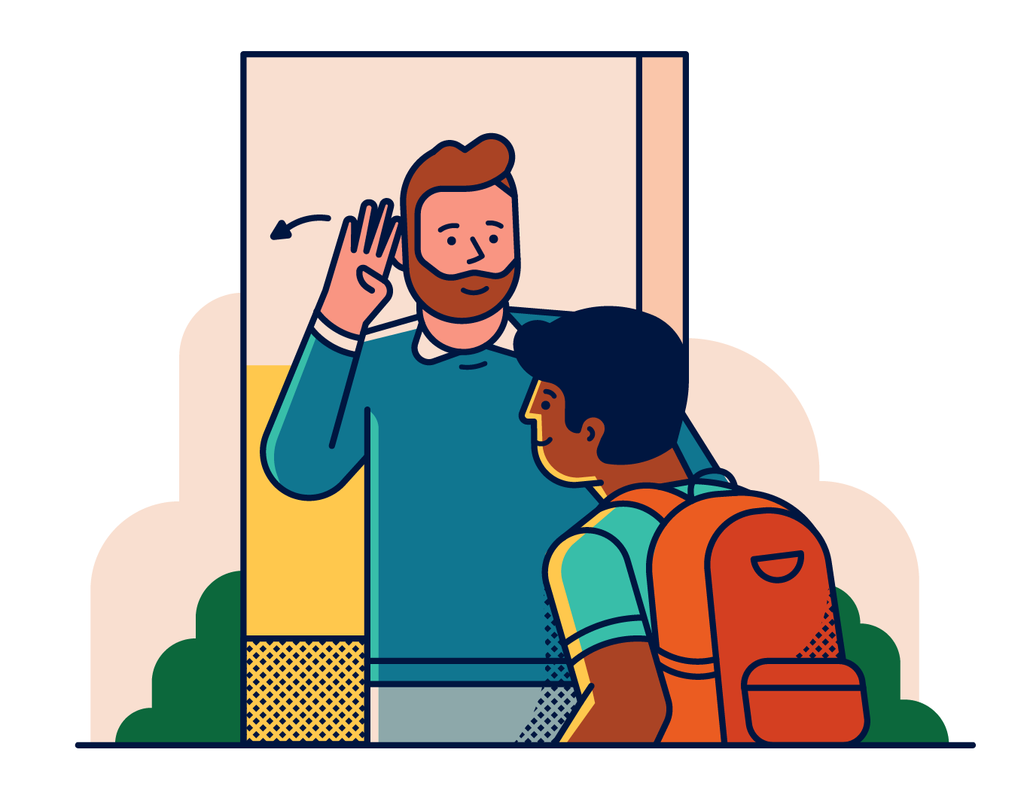A New Era of Deaf Education

BU Wheelock’s Deaf Studies Program Leads Philosophical Changes in Deaf Education
Researchers have created the first ASL/English bilingual curriculum
When Boston’s Horace Mann School for the Deaf and Hard of Hearing celebrated its 150th anniversary in November 2019, it achieved another milestone: it became the only US “dual-language school” to teach both American Sign Language and English.
To an outsider unfamiliar with the world of deaf education, the move might not seem very dramatic or edgy—but it was. American Sign Language isn’t universally embraced in deaf education; most deaf children in the in the United States are taught the same English curriculum designed for hearing students.
And many pay the price academically: deaf people consistently attain lower levels of education than hearing people. According to the National Deaf Center on Postsecondary Outcomes, 83 percent of deaf adults complete high school, compared to 89 percent of hearing adults, and far fewer continue their education in college.
“We’ve always used ASL,” says Maritza Ciliberto (Wheelock’91,’93,’95), Horace Mann’s principal, “but not with the intentional approach that we have in the last few years. The emphasis prior to that was always learning English and spoken language, which is not feasible for all students.”
Feasibility is key, because many students at Horace Mann, which serves young people in kindergarten through grade 12, face unique challenges; most of its students are profoundly deaf and their first language is not English. On the 2017 state English and mathematics MCAS tests, Horace Mann students in grades 3 to 8 were ranked as “not meeting expectations,” scoring significantly lower than their district peers. The school’s five-year graduation rate has been just 23 percent.

For the faculty in BU Wheelock’s deaf studies program, who have been on the vanguard of philosophical changes in deaf education that promote sign language, Horace Mann’s new dual-language designation by the school district and the state was a cause for celebration. BU has a connection with Horace Mann stretching back to its founding—many deaf education students complete fieldwork at the school or like Ciliberto, take permanent jobs there—and its deaf studies faculty has long lobbied the state for a revamp of deaf education. They point to research that shows the school’s new approach should help turn those test scores around.
“Historically, teaching deaf children ASL has often been seen as a last resort, only worth pursuing if schools can’t teach them to hear and speak. In this framing, learning ASL is a sign of failure,” says Naomi Caselli, a Wheelock assistant professor of deaf studies. “The dual-language designation takes learning ASL and English—becoming bilingual—as an accomplishment that deserves recognition. It is a remarkable act of justice.”
Seeds of change
In the 1800s, schools banned sign language in favor of teaching deaf students to speak, read, and write in English like “normal” people. Inventor Alexander Graham Bell, who was a BU professor in the 1870s and whose wife and mother were deaf, was one of those who favored suppressing the use of sign language. Bell taught at Horace Mann before and during his time as at BU, working with students to help them learn to speak English. Teaching sign language, he once said, would be “contrary to the spirit and practice of American institutions.”
The way of thinking he championed only really began to change in the last 50 years, although debate around it remains contentious.

Robert J. Hoffmeister came to BU in the late 1970s, arguing that teaching methods that shunted aside ASL were based on a myth that learning sign language would prevent deaf children from excelling in English.
Then and now, Hoffmeister says, society had been conditioned to view deafness as a negative—a condition in need of fixing.
“This is where we run counter to the medical profession,” says Hoffmeister, Wheelock a professor emeritus and coauthor of the landmark text A Journey into the Deaf-World.
More than 90 percent of deaf children are born to hearing parents, most of whom rely on the medical establishment for guidance, he says. Technological advancements in cochlear implants and other supports often give parents hope that their child will develop speech. Few ever meet other deaf people and most elect to pursue a spoken language as a primary communication method. Hoffmeister says the reality is that there is no cure for deafness and his research has shown that the more fluent a student is in ASL, the better able they are to learn, think, and acquire additional knowledge.
The child of deaf parents and a fierce advocate for deaf culture when it was not a popular stance, Hoffmeister says incremental changes in deaf education in the last 15 years, including the dual designation at Horace Mann, are cause for optimism.
“I’m hopeful for the future,” he says. “For a long time, I felt like a lone wolf in this field.”
Developing a curriculum
One of the latest advances was made by BU Wheelock researchers Todd Czubek (Wheelock’92,’98, GRS’17) and Kristin DiPerri (Wheelock’04). They recently created the first ASL/English bilingual curriculum for deaf students and have been invited to schools around the world to share it.

For years, Czubek worked as an elementary school teacher for deaf students in New Mexico. In the absence of an official bilingual curriculum, he and his colleagues adapted lesson plans for hearing children, teaching deaf children about English and grammar when they did not yet have a foundation in spoken English. His students simply weren’t making progress, he says, so he began looking at ways the school’s curriculum fell short.
Those lesson plans, Czubek says, make assumptions—that students are growing up in homes with accessible language models and that they will come to school well equipped to use their first language—that are not always true for deaf students. “Frequently, deaf students are coming from homes where they aren’t getting a foundation in language—not just spoken language, but access to language, period. And we’re asking deaf kids who don’t have this foundation to practice something that they just don’t know,” he says. “There are certainly examples of deaf students who come from signing homes and develop a first language who do well. Those kids typically are the ones who outperform those who don’t come from signing homes. So, I was like, ‘Wait a second, we need to back up.’ There needs to be a curriculum that makes sense for those kids who come in who haven’t developed a language and whose access to the world is primarily visual.”
Even students who come from signing homes can experience confusion when teachers aren’t trained to teach a bilingual curriculum. “I can speak from my experience as a deaf person that bilingual programs are critical for deaf children,” says Andrew Bottoms, a Wheelock instructor and codirector of the deaf studies program. He points to a memory he has of a teacher who wasn’t well-versed in ASL signing the word butterfly incorrectly. “Instead of signing for butterfly, she signed for the words butter, like the spread we put on our toast, and fly, like the verb,” he says. “I was left to understand why my teacher was talking about butter flying through the air. I had this experience as a child every day, trying to make sense of nonsensical language that came from my teachers, but I also was able to go home and ask my deaf mother, ‘Why is the teacher talking about butter flying through the air?’ So, how can we expect deaf children to learn English if they don’t have the foundation set in ASL?”
Czubek and DiPerri’s curriculum builds on ASL, using it as a scaffolding for students to later learn English. “We want students to be able to understand, study, and leverage all that they can learn and master about a visual language and then take that metalinguistic awareness that they developed in their first language and be able to apply it in a second language,” says Czubek. He and DiPerri designed a “concurrent curriculum” where students first learn about a grammar principle in American Sign Language. Once they’ve mastered that, they go on to study how that same grammar principle is realized in English. “The curriculum begins as really fundamental, making sure that students grasp how language and ideas are organized. The modality difference between English as a spoken and written language and ASL as a signed language presents a huge chasm that has been really hard for our field to cross, but this curriculum allows us to do so.”

Czubek and DiPerri based the curriculum on a program they developed at the Scranton School for Deaf & Hard-of-Hearing Children in Pennsylvania in collaboration with the Learning Center for the Deaf’s Center for Research and Training in Massachusetts, which is run by Hoffmeister. The results over several years of testing were “consistently incredible,” Czubek says, with the majority of students in the program performing at or above levels of English proficiency and general knowledge.
Pioneering a dual-language designation
Such advances, as well as the broader advocacy of faculty like Hoffmeister, have deeply influenced Horace Mann’s Ciliberto, a graduate of BU’s deaf studies program.
A teacher at Horace Mann for more than a decade, beginning as a paraprofessional, she hopes to build on Czubek and DiPerri’s curriculum as part of the school’s dual-designation effort. For the last three years, students at Horace Mann, who are taught by teams of ASL and English teachers, have been immersed in sign language learning from the time they enroll in kindergarten.
By giving deaf children the opportunity to learn ASL and English at a young age, she says, the school will be improving their ability to connect with their peers—and the world.
This article was originally published in Wheelock Magazine.
Comments & Discussion
Boston University moderates comments to facilitate an informed, substantive, civil conversation. Abusive, profane, self-promotional, misleading, incoherent or off-topic comments will be rejected. Moderators are staffed during regular business hours (EST) and can only accept comments written in English. Statistics or facts must include a citation or a link to the citation.